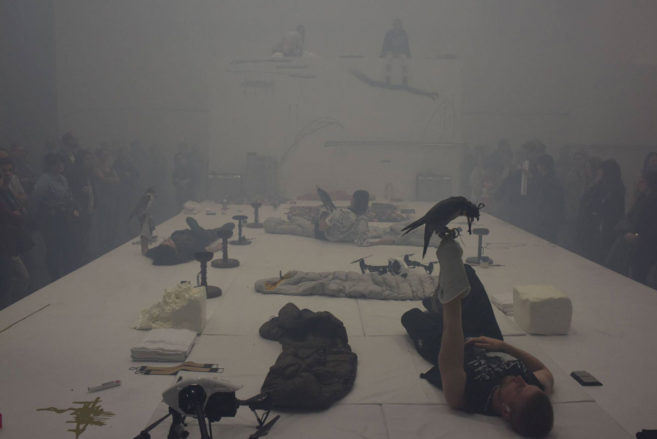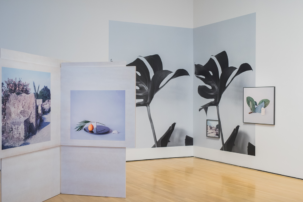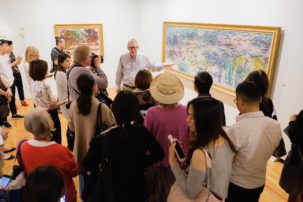Some artists and art installers remain unpaid six months after the closing of the latest Biennale de Montréal. And it is unclear when the financially troubled organization—which just announced its situation as “precarious” and will be delaying its 2018 edition due to budget concerns—will be able to pay them.
“Unfortunately, we haven’t been able to pay all of the suppliers,” Biennale de Montréal board chair Cédric Bisson confirmed in a phone interview this week. “But,” he added, “we place utmost importance on the relationships we have in the artistic community, and we will do all we can to maintain those relationships.”
The lack of artist and art-installer payments was first reported in April by Le Devoir. Canadian Art has found that many of these payments are still outstanding.
One supplier who worked for the Biennale, and wished to remain anonymous, told Canadian Art that they were only paid one month ago for invoices dating back to August 2016. (Invoices for installation and tech work are typically paid within 30 days, they added.) They were hardly the only supplier or artist struggling to be paid by the Biennale before, during and after its run.
“There were also cases where suppliers went to [Biennale] sites [during the run of the show] and said, ‘If I am not paid, I will take all this stuff and put it in my truck and leave,’” the source said. Only then would their outstanding invoices be paid up.
In a July 17 press release, the Biennale tried to trumpet their successes—such as increased visitor numbers and bringing the work of Venice Lion d’Or winner Anne Imhof to Canada—alongside the difficult financial news. More favourable terms of payment for international over Canadian artists has also proved to be a sore point for locals.
“A bunch of international artists were brought in, and that was great,” the anonymous source said. “But they were privileged over the local community in terms of being paid,” referring to both the promptness of payment and size of artists’ fees. Many of the installers at the festival were also themselves artists, using the Biennale work as a day job.
Bisson attributes the Biennale de Montréal’s financial problems to “a combination of fundraising events that did not raise amounts expected, corporate donations that did not materialize,” and, overall, “lower revenues than we thought.” He added that the Biennale’s board did not become aware of these financial problems until after the event closed on January 15. Later that month, the board announced that it would not renew its contract with Sylvie Fortin, the artistic and executive director of the Biennale since 2013.
Bisson said that while the board is delaying the Biennale’s next edition, it is not giving up on the event. Nor does it intend to significantly alter its scale or focus.
“The board believes strongly that it is important to do a biennale in Quebec and in Canada,” Bisson said. “We believe we need it as a country.” He added, “The biennale cannot be a biennale with just local artists. It must be international and local by definition.”
Even after Fortin’s departure at the end of January, inquiries to the board about unpaid invoices were met by a lack of response for weeks.
Troubles at the organization behind the Biennale are nothing new. Its 2013 edition was postponed until 2014 due to what critic Nancy Tousley called “losses in funding, changes of directors and delays.” That edition was also marred by reports of late payments to suppliers.

 Anne Imhof's performance Angst III took place at the Musée d'art contemporain de Montréal as part of the Biennale de Montréal. Photo: Jonas Leihener via Facebook.
Anne Imhof's performance Angst III took place at the Musée d'art contemporain de Montréal as part of the Biennale de Montréal. Photo: Jonas Leihener via Facebook.







